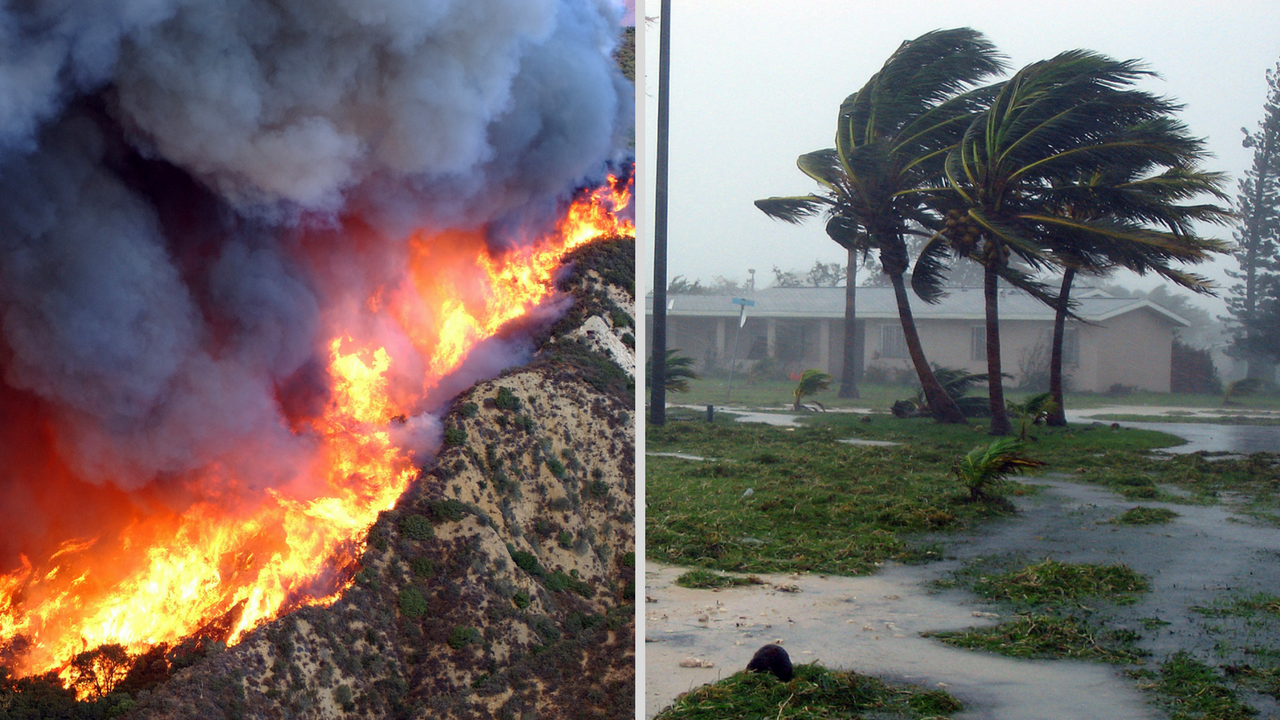
IS THIS CLIMATE CHANGE OR JUST WEATHER?
Oct 17, 2017Doesn’t it feel like we’ve been tossing around in a washing machine of natural disasters in 2017? Hurricanes, wildfires, flooding, drought, storm surge… earthquakes! Is this because of climate change or is it just weather?
What’s the difference between climate and weather?
Climate is different than weather and both are driven by global warming and human land use.
Weather is local and temporary. It’s how the atmosphere is behaving at a particular time in a certain place. Temperature, rain, snow, and wind are all elements of weather. Weather is variable and constantly changing. When you look out your window, you are looking at weather; the 7-day temperature, sun, rain or snow forecasts are telling you about the expected weather.

image source: The Weather Network
A hurricane, snowstorm or heat wave is weather – not climate.
Thinking bigger picture, climate describes average atmospheric indicators like temperature, precipitation, wind and other weather conditions over a long period of time in a region. Check out these graphs below:

image source: tripsavvy.com
These graphs show the average the average monthly rainfall, humidity and minimum and maximum temperature in the San Francisco, California region. This is considered the climate of the region. Climate is influenced by the oceans, mountains, elevation and how far north or south you are from the equator.
So, weather shows very high variability week-to-week, day-to-day and even hour-to-hour. Climate on the other hand reflects the average trends of weather. But averages are deceiving and do not tell the whole story. We hear that climate might warm by 1.5 or 2 degrees and it doesn’t seem like much because we are more in tune with weather that fluctuates by 10 degrees or more from morning till just noon!
To illustrate this further, many scientists say it’s too early to tell if the frequency of hurricanes will increase but, The National Oceanic and Atmospheric Administration (NOAA) says “it is likely that greenhouse warming will cause hurricanes in the coming century to be more intense globally and have higher rainfall rates than present-day hurricanes.”[1]  Similarly, seasonal variation is more important than annual trends when it comes to wildfires. Kari Cobb, a spokesperson for the National Interagency Fire Center recently said in an interview that “longer summers, higher temperatures, decreased precipitation, and longer episodes of drought - the combination of these changes has increased the availability of dry fuels and the ease at which fire ignites and spreads.”[2] What scientists think will happen is the intensity and frequency of extreme events will increase. While this will only move the averages slightly, the direct impact of these extreme events will be felt directly and fiercely.
Similarly, seasonal variation is more important than annual trends when it comes to wildfires. Kari Cobb, a spokesperson for the National Interagency Fire Center recently said in an interview that “longer summers, higher temperatures, decreased precipitation, and longer episodes of drought - the combination of these changes has increased the availability of dry fuels and the ease at which fire ignites and spreads.”[2] What scientists think will happen is the intensity and frequency of extreme events will increase. While this will only move the averages slightly, the direct impact of these extreme events will be felt directly and fiercely.
Let’s be clear however, neither climate nor weather are the cause – they are simply outcomes.
Global warming combined with human land use is causing changes in weather and it’s long-term climate trends. How do we know the earth is warming? These graphs show how the yearly surface temperature of the earth has changed over the last 140 years. The 0 line represents the 30-year average of surface temperatures measured between 1961 and 1990.

Source: http://www.ipcc.ch/ipccreports/tar/wg1/figspm-1.htm
The top graph shows that from 1860 to about 1980, the measured surface temperature was almost always below the 30-year average, since then the measured surface temperatures have been above the average. This tells us that the average surface temperature climate trend is rising over this 140-year time frame.
And while climate has always been changing, scientists have learned from their studies of the Earth’s climate history, that the planet is warming faster than at any other time in history and this rapid increase in temperature will bring many dramatic changes to our climate, and this is expected to have many negative impacts on ecosystems and people. The lower graph shows the earth’s surface temperature over the last 1000 years. The red line shows thermometer measurements and the blue line shows temperature derived from tree rings, corals, ice cores and historical records because we didn’t have thermometers then. The graph highlights the sharp temperature increase between 1900 to 2000 not observed in the previous 900 years.
The less visable factor in this is human land use. Not only are humans dramatically changing vegetation, modifying natural disturbance like suppressing natural, low intensity wildfires, re-engineering rivers and floodplains, and increasing greenhouse gas levels in the atmosphere, there are simply more and more of us and so the interface between humans and nature is increasing.
Risk is the product of event frequency multiplied by consequence – and both of these factors are on the rise.
How is extreme weather and shifting climate affecting you?
[1] https://www.gfdl.noaa.gov/global-warming-and-hurricanes/
[2] http://www.factcheck.org/2017/10/warming-blame-western-wildfires/

